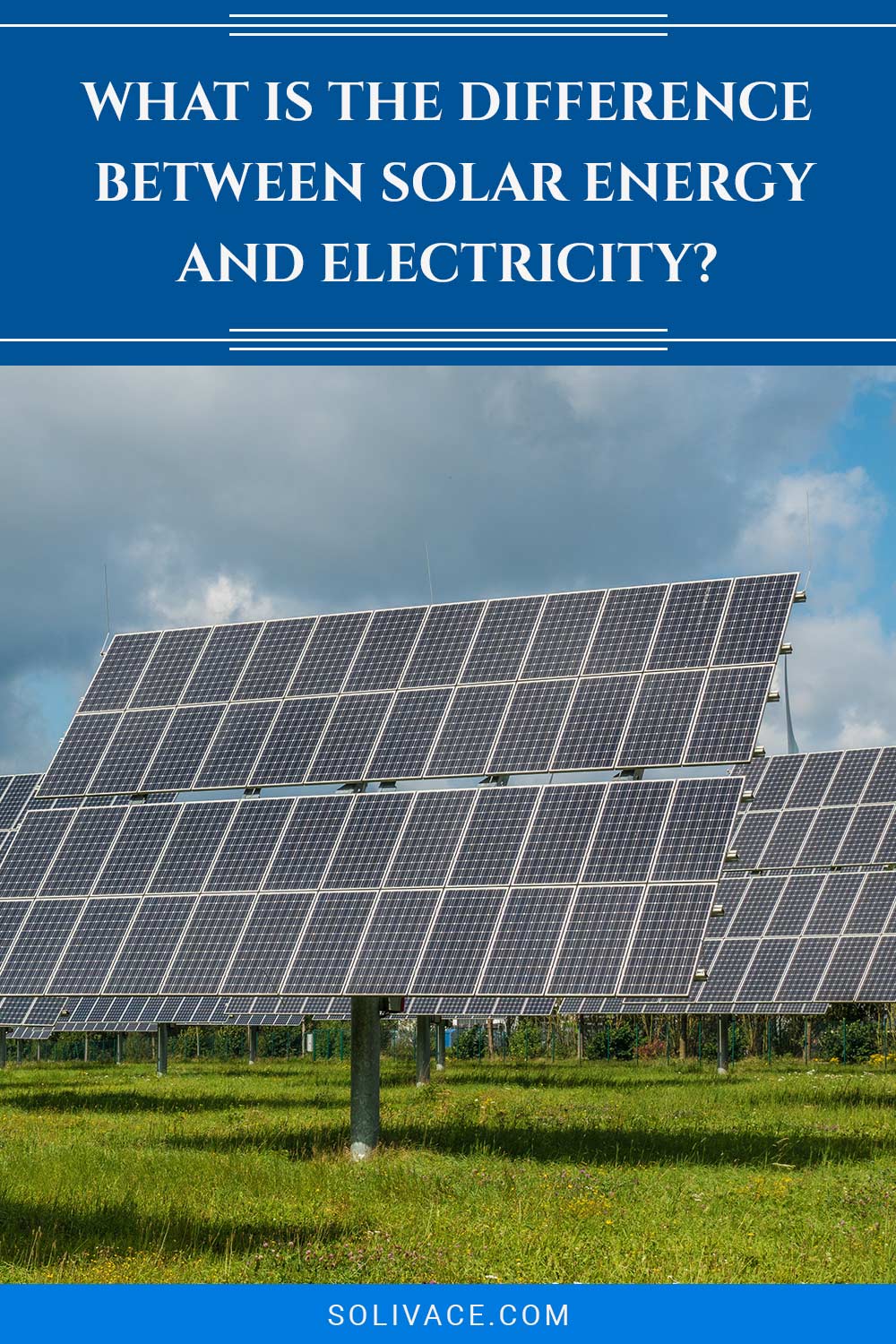What Is The Difference Between Solar Energy And Electricity?
We may earn commissions for purchases made through links on our site. Learn more on our about us page.
Let me put it this way: Solar energy is collected in photons, which produce electricity that can be stored and utilized later. The difference between the two is whether the power can be utilized by humans or in what elemental form the solar photon is in.
There are other ways to produce electricity for human consumption, and that usually entails creating power with a generator and turbine system.
Most of the time, the generator is turned by the impact of internal combustion or steam, which can only be achieved with a combustible fuel source.

Is Solar Energy Electrical Energy?
As simplified above, solar energy comes from the sun in the form of radiation and photonic power. It is through a process of collecting these particles that earth technology turns solar energy into electricity or at least a form that gets stored as usable power.
The easiest way to put it is that electricity is produced in different forms, naturally even, but the new green technology has become a means by which to collect photonic power in an eco-friendly manner.
So, in a way, solar energy is electrical energy converted into a usable form.
What Differences are There?
The major difference between solar energy and electrical energy is the source; it is true that solar energy is the same as electrical energy when converted by solar panel technology.
Solar energy comes from radioactive particles known as photons, which are then converted into electricity stored in a battery system.
Electricity, however, does not depend on solar or star-created means. It can be produced even from a thundercloud or from combustion-type generators.
For the most part, Solar energy depends on a single source of creation, while electricity can be produced from many different sources.
What are the Three Types of Solar Energy?
There are going to be three basic types of solar energy that come from our sun. First, photovoltaic solar energy will be the primary source of storable power for solar panel systems.
These types of solar energy will come from light and are converted within the solar panel to electricity.
Solar thermal is known as thermo-solar power, which utilizes heat to create enough power for cooking or heating the home. The last will be passive solar energy, the opposite of the first two is collected by just having the panels within the sunlight.
Are These all Unlimited?
There is going to be a long time before the two-billion-year expiration date that scientists have predicted for our Solar System’s sun. So, technically, no; this source of solar photonic energy will be semi-unlimited.
Let us be honest, two billion years is a very long time from which to collect solar energy, but the sun is not an unlimited resource, which strikes a truth about all resources, including those on Earth, which are only finite in nature and should be used wisely.
Nevertheless, solar will be a reasonable, reliable, and renewable resource for the foreseeable future.
How Do We Use Solar Energy to Generate Electricity?
The basic process in which solar technology absorbs and converts the radiation sent from the sun starts and ends with the photon particle.
This piece of radioactive material travels from a solar flare-like event and reaches the Earth with trillions of its similar photonic particle relatives.
The solar panel collects these photons from the sun and uses them to create a positive charge that can then be converted to usable electricity and stored in batteries. The panel technology uses heat and light elements to collect energy to store electricity.
Final Thoughts on the Difference Between Solar Energy and Electricity
Solar panel technology has come a long way since the turn of the twenty-first century, in which solar heat and light can be utilized at the photon level as a source of renewable energy.
In addition, the green technology movement has made this an interesting incentive for small businesses and homeowners alike.
As future technologies advance in capabilities, they will bring forward an energy-producing revolution that may replace fossil fuels and oil as the main source of power on the planet.
This may not be the only alternative and renewable resource available, but it will be a reliable and functional means for powering the home and future power grids.



Leave a Reply
You must be logged in to post a comment.